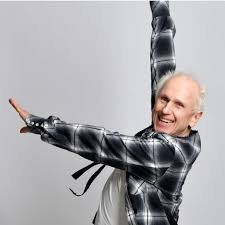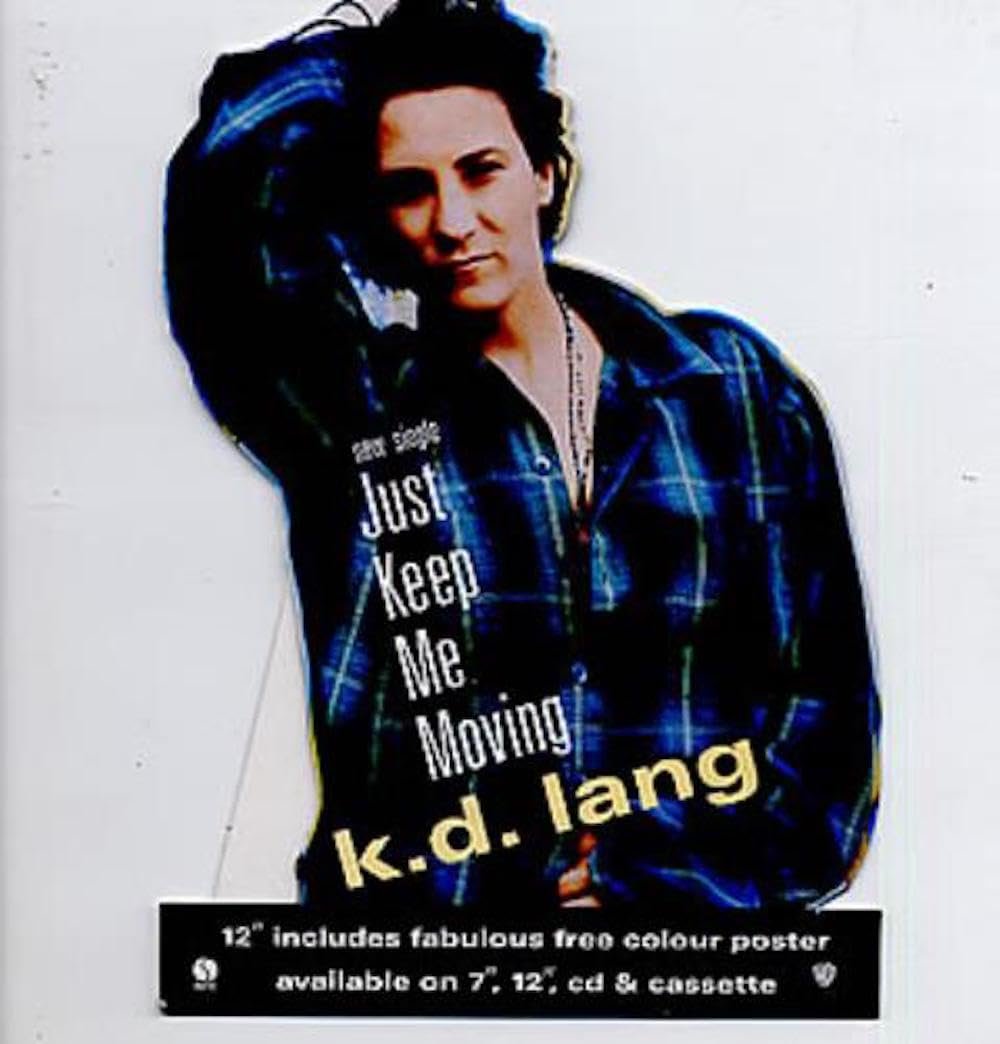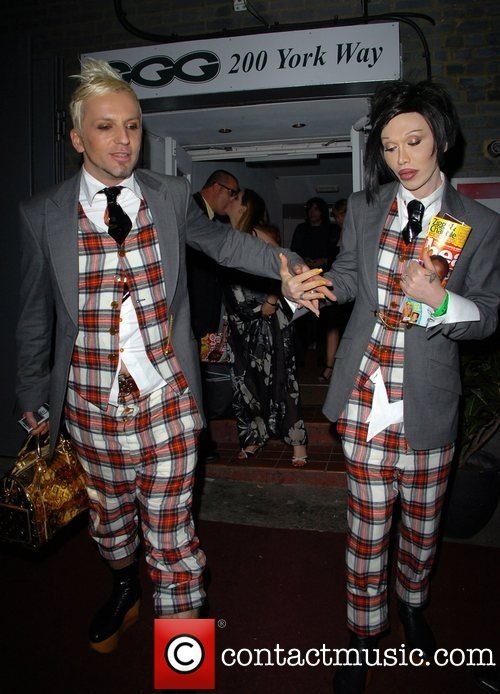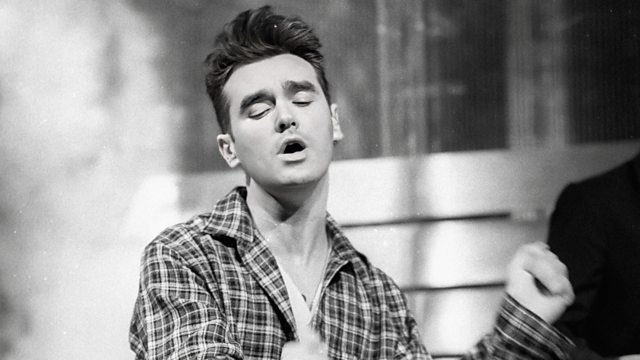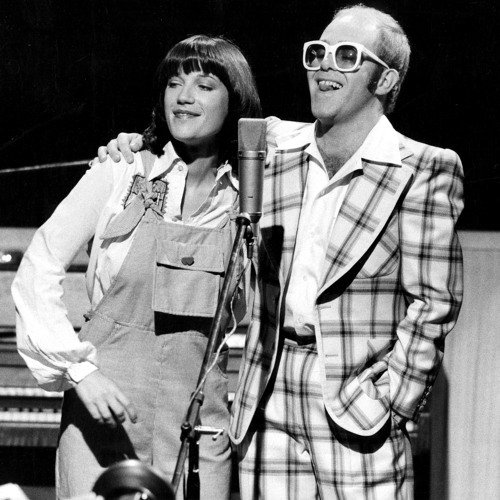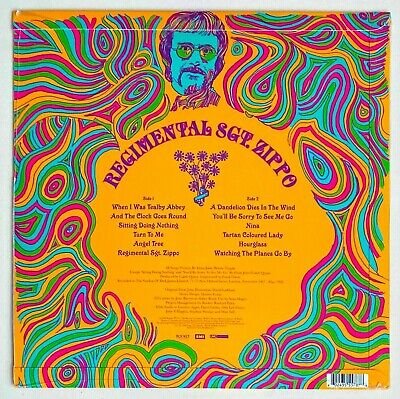1998
Wayne Sleep
Wayne Sleep, born in Plymouth in 1948, is a celebrated British dancer, choreographer, and actor. Despite being only 5'2", he became the shortest male dancer ever admitted to the Royal Ballet School and later rose to the rank of Senior Principal Dancer with the Royal Ballet. His height, initially seen as a limitation, led choreographers like Frederick Ashton and Kenneth MacMillan to create roles specifically for him. He also became a household name through his role as Mr. Mistoffelees in the original production of Cats and famously danced with Princess Diana at the Royal Opera House in 1985.
In his personal life, Sleep kept his sexuality private until his 40s, partly out of respect for his mother. He met his husband José Bergera in Spain in 1998, and the couple has been together ever since. Sleep has spoken openly about the loneliness he experienced before coming out and how finding love later in life brought him a deep sense of happiness. His memoir, Just Different, shares his story of growing up working-class, navigating fame, and living through the AIDS crisis as a gay man in Britain.
1993
Tales of the City
Armistead Maupin’s Tales of the City (1993) was a groundbreaking television miniseries based on Maupin’s beloved novels, which originally ran as a newspaper serial in the 1970s. The series follows Mary Ann Singleton, a young woman who moves from Ohio to San Francisco and finds herself living at 28 Barbary Lane, an eccentric apartment house presided over by the mysterious and nurturing Anna Madrigal. The show paints a vivid portrait of queer life in 1970s San Francisco, blending comedy, romance, and drama while exploring themes of identity, chosen family, and sexual freedom.
When it aired in 1993, Tales of the City was one of the first mainstream television dramas to openly feature gay, lesbian, and transgender characters as complex leads — including depictions of same-sex relationships, cruising culture, and drag. It starred Olympia Dukakis as Anna Madrigal and Laura Linney in one of her earliest major roles. While the series received critical acclaim and a passionate fan base, it also faced backlash from conservative groups and politicians, making its bold, unapologetic portrayal of queer life all the more significant. Today, Tales of the City stands as a cultural touchstone — a tender, funny, and revolutionary snapshot of a community and an era.
1993
Derek Jarman - Blue
Derek Jarman was a British filmmaker, artist, and writer who became one of the most significant queer voices in 20th-century art and cinema. He came out publicly at a time when homosexuality was still heavily stigmatized, and much of his work confronted that marginalization head-on. Drawing from his background in painting and set design, his films were visually experimental and rich with symbolism, often blending history, mythology, and personal experience. Jarman’s queerness was central to his creative identity—not as a theme to be explained or justified, but as a lens through which he interpreted the world. His work stood in stark contrast to the dominant narratives of the time, offering complex, defiant, and often tender portrayals of queer life.
Blue, made in 1993 as he was going blind from AIDS-related illness, is one of his most powerful and unconventional films. The screen remains a flat, unchanging blue while Jarman and his collaborators speak over it, reflecting on his illness, his memories, and the world as he sees it slipping away. It’s a deeply intimate piece—at once a lament, a love letter, and a protest. With Blue, Jarman stripped cinema of its visuals to draw attention to the inner world of someone living and dying with AIDS, refusing spectacle in favor of presence. The film is queer not just in subject, but in form: it challenges norms, embraces vulnerability, and insists on the value of lives often overlooked or silenced.
1992
K D Lang
k.d. lang is a Canadian singer-songwriter whose powerful voice and genre-defying style made her one of the most distinctive artists of the late 20th century. Emerging in the 1980s with a unique blend of country, pop, and torch song influences, she achieved major success with her 1992 album Ingenue, which featured the hit single Constant Craving. The album marked a shift from her earlier country sound into a more elegant, emotional pop style and earned her a Grammy Award. Lang’s rich contralto voice and understated stage presence set her apart in an industry often driven by flash, and she quickly became a cult figure for her musical depth and quiet intensity.
In the same year Ingenue was released, k.d. lang came out publicly as a lesbian in an interview with The Advocate, making her one of the first major music artists to do so at the height of their career. Her openness was groundbreaking in the early 1990s, when few mainstream performers were publicly out, and her visibility helped expand public conversations around queerness, especially in traditionally conservative spaces like country music. Lang’s androgynous style, political activism (including support for animal rights and LGBTQ+ causes), and refusal to conform to gendered expectations made her an icon of queer resilience and authenticity. Her work continues to resonate with LGBTQ+ audiences for its emotional honesty and quiet strength.
1990s
Shirley Manson in a tartan jacket
Shirley Manson, the Scottish lead singer of the rock band Garbage, has expressed that she identifies with the "idea of non-binary." In a 2021 interview with The Scotsman, she stated, "Being a woman who has got a lot of male traits, I’ve always really identified with this idea of non-binary." Manson elaborated that the concept of identifying within the spectrum of gender has always resonated with her. Despite this identification, she continues to use she/her pronouns.
Throughout her career, Manson has been a vocal advocate for LGBTQ+ rights and has often incorporated themes of gender fluidity and nonconformity into her music.
Manson's openness about her gender identity and her support for the LGBTQ+ community have solidified her status as a queer icon in the music industry.
1990s
Kurt Cobain in a plaid flannel shirt
https://theglitterandgold.com.au/why-kurt-cobain-wore-dresses/
“I like to wear dresses because they’re comfortable,” Kurt Cobain told Melody Maker in December 1992. “There’s nothing more comfortable than that cozy flower pattern… It just feels comfortable, sexy and free wearing a dress. It’s fun.”
Cobain frequently confessed to being more in touch with his feminine than male side growing up. This often put him at odds with the macho attitudes of others he lived alongside in the conservative North American logging town of Aberdeen. In addition to a fascination with women’s clothes, Cobain also experimented with makeup from a young age. As an adult, he wore women’s underwear regularly around the house. Most famously he wore lingerie to an important meeting with music industry powerbroker David Geffen.
1990s
Prince in a high waisted tartan suit
Prince’s relationship with queer culture was defined by his fearless exploration of gender and sexuality. With his androgynous style, high heels, makeup, and sexually fluid lyrics, he challenged traditional masculinity and created space for queer self-expression. Songs like If I Was Your Girlfriend and his use of the Love Symbol—a blend of male and female signs—offered a radical take on gender identity that deeply resonated with LGBTQ+ fans.
Though he never publicly identified as queer, Prince’s artistry made him a queer icon. He embraced fluidity in both his image and music, surrounding himself with diverse collaborators and pushing boundaries without apology. For many, he was a symbol of freedom—a reminder that sensuality and self-expression didn’t need to conform to societal norms.
1990s
Sleater-Kinney in a tartan mini skirt
https://www.them.us/story/sleater-kinney-little-rope-carrie-brownstein-corin-tucker-interview
Sleater-Kinney has long been embraced by queer culture for their feminist politics, emotionally raw songwriting, and boundary-pushing presence in punk rock. Founding members Corin Tucker and Carrie Brownstein were briefly in a relationship, and their breakup inspired songs like “One More Hour,” now considered a queer classic. Though the band never labeled themselves as explicitly queer, their work has deeply resonated with LGBTQ+ audiences through its themes of identity, desire, and defiance. Their collaborations—with queer artists like Miranda July and St. Vincent—further reflect their ties to queer creative circles. Sleater-Kinney remains a vital voice for queer representation in rock.
1990s
Bikini Kill in a tartan mini skirt
https://www.teenvogue.com/gallery/bikini-kill-vfiles-kathleen-hanna
Kathleen Hanna, a pioneering feminist punk musician and activist, has had a profound and enduring relationship with queer culture. As the frontwoman of Bikini Kill and a central figure in the riot grrrl movement, Hanna's work has consistently challenged societal norms and championed inclusivity. One of her most iconic songs, "Rebel Girl," is celebrated as a "frank and explicit tribute to, and love song for, another woman," highlighting themes of feminist solidarity and queer desire. Beyond her music, Hanna has been a vocal advocate for LGBTQ+ rights. She has expressed support for marriage equality and has been inspired by young activists forming LGBTQ+ groups in schools, stating that such efforts made her feel hopeful for the future. Hanna's commitment to queer inclusivity is also evident in her actions. She has explicitly and consistently expressed support for trans rights, making it clear that she supports trans people and even changed parts of the riot grrrl manifesto to make it explicitly trans-friendly.
1980s/90s
Leigh Bowery in a tartan clubland outfit
Leigh Bowery (1961–1994) was an Australian-born performance artist, fashion designer, and club promoter who became an icon of queer culture and avant-garde fashion in 1980s and ’90s London. Known for his outrageous, body-altering costumes and confrontational performances, Bowery turned himself into a living artwork, challenging norms around gender, beauty, and identity.
He founded the legendary nightclub Taboo, a haven for the LGBTQ+ community and a space of radical self-expression. Bowery also modeled for Lucian Freud and designed costumes for choreographer Michael Clark, bridging underground culture and the high art world. Though he died of AIDS-related complications in 1994, Bowery’s influence endures across fashion, drag, and performance art as a fearless icon of queer creativity.
1993
Vivienne Westwood tartan dress
Vivienne Westwood, the legendary British fashion designer and punk icon, had a profound and lasting relationship with tartan, rebellion, and the queer community. Known for fusing traditional British textiles—like tartan—with radical, anti-establishment designs, she redefined what heritage could mean in a contemporary, subversive context. Her use of tartan, particularly in the 1993 “Anglomania” collection, merged classic Scottish symbolism with punk attitude, turning the fabric into a statement of defiance, queerness, and creative freedom.
Westwood’s relationship with the queer community ran deep. As one of the architects of punk fashion in the 1970s, she helped foster a visual language of resistance that spoke to outsiders of all kinds—particularly LGBTQ+ people. Her designs celebrated gender fluidity, androgyny, and eroticism, often challenging traditional notions of masculinity and femininity. She featured queer models, worked with LGBTQ+ artists, and was a long-time supporter of LGBTQ+ rights, climate justice, and anti-capitalist causes.
To many in the queer world, Westwood wasn’t just a designer—she was a symbol of fearless individuality. Her legacy lives on not only in the tartan skirts and bold silhouettes she made iconic, but in the generations of queer creatives who saw her as a beacon of self-expression, defiance, and joy.
Original film 1988
Hairspray tartan skirts
Hairspray is a deeply queer film in spirit. Its queerness comes from its creator, its themes of radical inclusion, and its love of camp.
The original 1988 film was written and directed by John Waters, a legendary queer filmmaker known for his outrageous, campy style. He cast his friend Divine, a drag queen, as Edna Turnblad — Tracy’s loving, over-the-top mother. This drag casting became a tradition in all versions of Hairspray, celebrating gender fluidity in a mainstream setting.
The film and musical embody camp — with big hair, loud costumes, and joyful dance numbers — a visual and emotional language long embraced by queer communities. Its style is not just fun but defiant, rejecting societal norms about body size, race, and gender roles.
1987
Stephen Fry
Stephen Fry is a British writer, actor, and comedian who became a household name in the 1980s through his work on the sketch comedy show A Bit of Fry and Laurie, which he co-created and starred in with his long-time collaborator Hugh Laurie. The show first aired in 1987 and showcased Fry’s sharp wit, love of language, and uniquely British absurdist humour. Before that, he had already begun to build a reputation for his intelligence and comic talent in the Cambridge Footlights, where he performed alongside Laurie, Emma Thompson, and other future stars. His first real breakthrough on television came with the 1982 series The Cellar Tapes, which won the Perrier Comedy Award and led to further opportunities in British comedy and drama.Fry has long been open about his sexuality, identifying as gay and speaking candidly about his experiences with mental health and growing up queer in a repressive environment. His eloquence, intelligence, and self-deprecating humour helped endear him to a wide audience, including many in the LGBTQ+ community who saw in him a rare combination of visibility and vulnerability. Over the years, Fry has become an advocate for mental health awareness and queer rights, while continuing to work across literature, film, theatre, and broadcasting. His impact goes far beyond his early fame—he remains a key figure in British culture, celebrated for his intellect, compassion, and unapologetic queerness.
1984
Pete Burns, Dead or Alive
Pete Burns, the lead singer of Dead or Alive, was a striking and unapologetic figure in 1980s pop culture. Born in 1959 in Wirral, England, he rose to fame with the hit single You Spin Me Round (Like a Record) in 1984, a high-energy dance track that became a defining song of the decade. But beyond the music, Burns was known for his bold, androgynous appearance—flamboyant, gender-fluid, and completely at odds with mainstream expectations. With heavy makeup, elaborate outfits, and an ever-evolving face shaped by cosmetic surgery, he refused to conform to gender norms or play it safe, becoming a queer icon through sheer force of personality.
Burns never identified strictly within labels, often rejecting both "male" and "female" categories and stating that he existed beyond conventional gender. In interviews, he spoke candidly about sexuality, beauty, and transformation as forms of personal expression and rebellion. His queerness was not just about who he loved, but about how he lived—unfiltered, provocative, and fiercely individual. Pete Burns challenged the public to rethink their assumptions, bringing queer aesthetics into mainstream pop culture with an intensity and glam that left a lasting impact.
1983
Bronski Beat
Bronski Beat, formed in London in 1983, was a pioneering British synth-pop trio comprising Jimmy Somerville, Steve Bronski, and Larry Steinbachek. All three members were openly gay, and their music boldly addressed LGBTQ+ issues at a time when such topics were often marginalized in mainstream media. Their debut single, "Smalltown Boy" (1984), became an international hit, narrating the poignant story of a young gay man leaving his hometown due to homophobia. The song's haunting melody and Somerville's distinctive falsetto resonated with many, making it an enduring anthem for queer liberation.
Their debut album, The Age of Consent, further cemented their role as activists in the music industry. The album's inner sleeve listed the varying ages of consent for homosexual acts across different countries, highlighting the legal inequalities faced by gay men. Following Somerville's departure in 1985 to form The Communards, Bronski Beat continued with new vocalists, achieving hits like "Hit That Perfect Beat." Despite lineup changes, the band's commitment to addressing social issues through music remained steadfast. The deaths of Steinbachek in 2016 and Bronski in 2021 marked the end of an era, but their legacy endures through their influential contributions to music and LGBTQ+ advocacy.
1983
REM
Michael Stipe, born on January 4, 1960, in Decatur, Georgia, is best known as the lead singer of R.E.M., one of the most influential alternative rock bands of the 1980s and 1990s. The band formed in 1980 in Athens, Georgia, and gained critical acclaim with their debut album Murmur in 1983. Stipe's distinctive voice and enigmatic lyrics contributed to the band's unique sound, which blended post-punk and folk influences. R.E.M.'s success continued with albums like Out of Time (1991) and Automatic for the People (1992), solidifying their place in rock history.
In 1994, Stipe publicly discussed his sexuality, describing himself as someone who had enjoyed relationships with both men and women. He has often used the term "queer" to describe his identity, emphasizing its inclusivity and resistance to strict categorization. Stipe's openness about his sexuality was significant during a time when few public figures were forthcoming about such matters. His candidness has contributed to broader conversations about sexual identity and has provided representation within the music industry.
1983
Frankie Goes to Hollywood
Frankie Goes to Hollywood exploded onto the UK music scene in 1983 with their provocative debut single Relax, which quickly became a lightning rod for controversy—and a queer cultural landmark. The band, fronted by openly gay singer Holly Johnson, combined bold sexuality with synth-driven pop and a theatrical image that challenged conservative norms. When the BBC banned Relax in early 1984 due to its explicit lyrics and homoerotic undertones, the record shot to number one, staying at the top of the UK Singles Chart for five weeks. This censorship backfired spectacularly, turning the song into a symbol of rebellion and queer expression. Part of the video was filmed in Heaven nightclub.
The band’s debut album Welcome to the Pleasuredome, released in October 1984, further cemented their place in pop history. With a mix of politics, sex, and spectacle, it reflected the charged atmosphere of Thatcher-era Britain, where queerness was both hyper-visible and under threat. Frankie Goes to Hollywood didn’t just make music—they sparked national debates and brought queer energy to the heart of mainstream pop. Their boldness in image and sound helped shift what was possible for LGBTQ+ artists, making 1984 a turning point in the visibility of queer themes in popular culture.
1983
Morrissey, The Smiths
Morrissey first rose to fame as the lead singer of The Smiths, whose debut single Hand in Glove was released in May 1983. Though it didn’t chart at the time, it introduced the band’s distinct sound—jangly guitar lines paired with Morrissey’s emotionally raw and literary lyrics. Later that year, This Charming Man was released in October 1983 and became their breakthrough hit, reaching number 25 on the UK Singles Chart. With its ambiguous lyrics and flirtatious tone, it quickly became a touchstone for queer listeners drawn to its coded references and Morrissey’s unorthodox masculinity.
The Smiths followed up with What Difference Does It Make? in January 1984 and Heaven Knows I’m Miserable Now in May 1984, further cementing their place in British indie music. These early singles, filled with themes of longing, isolation, and identity, resonated with queer fans who saw in Morrissey a kindred spirit—someone who didn’t fit the mainstream, yet refused to apologise for it. While Morrissey remained deliberately evasive about his sexuality, the emotional resonance and gender ambiguity of these songs made them feel deeply queer in tone, offering a rare kind of representation in early 80s pop.
1983
Greenham Common
The Greenham Common Women's Peace Camp was a defining moment in lesbian and feminist history in the UK. Set up in 1981 by a group of Welsh women protesting the arrival of American cruise missiles at RAF Greenham Common, the camp quickly evolved into a powerful symbol of women-led, anti-nuclear, and queer resistance. While not exclusively a lesbian space, many of the women involved were lesbians, and the camp became a safe and radical space where lesbian identity and politics could be openly expressed—something still rare at the time. It challenged not only the militarization of land and bodies but also the patriarchal structures within wider society and within the peace movement itself.
For many women, Greenham was a political awakening—a space where sexuality, feminism, and anti-war activism merged. Living communally, often in harsh conditions, the women resisted the military through acts of civil disobedience: cutting through fences, dancing on missile silos, and forming human chains around the base. The press often labeled them "lesbian troublemakers," which they reclaimed with pride. The camp rejected hierarchy and embraced a kind of anarchic, queer autonomy that deeply influenced later activist movements. Today, Greenham is remembered not just as a protest, but as a living experiment in queer feminist solidarity, where lesbians could resist and reimagine the world together—on their own terms.
1982
Boy George
Boy George rose to fame as the frontman of Culture Club, a band that became a global sensation in the early 1980s. Their debut single, White Boy, was released in 1982, but it was their second single, Do You Really Want to Hurt Me, released in September 1982, that catapulted them to international stardom. The song reached number one in the UK and became a top 10 hit in the US, instantly marking Boy George as a unique and unforgettable figure in pop. His androgynous look, soulful voice, and vulnerable lyrics struck a chord with audiences at a time when queerness was rarely acknowledged in the mainstream.
The band's debut album, Kissing to Be Clever, came out in late 1982 and produced further hits like Time (Clock of the Heart) in November 1982. Their biggest global success came with Karma Chameleon, released in September 1983, which became a number one hit in over a dozen countries, including both the UK and US. Boy George’s unapologetically flamboyant presence and refusal to conform to gender expectations made him a trailblazer. Although he didn’t explicitly label his sexuality at the height of his fame, he later came out as gay and spoke openly about his relationships, including with Culture Club drummer Jon Moss. His early visibility laid groundwork for greater queer representation in pop music.
1981
Wham!
Wham! formed in 1981, when school friends George Michael and Andrew Ridgeley decided to make music together. They quickly rose to fame with their vibrant, hook-filled pop and fun-loving image, becoming one of the defining acts of the 1980s. Their debut album Fantastic came out in 1983, followed by the hugely successful Make It Big in 1984, which included chart-topping singles like Wake Me Up Before You Go-Go, Freedom, and Careless Whisper. In 1985, they made history as the first Western pop act to tour China, symbolising the global reach of their appeal. Wham! ended on a high in 1986 with their farewell concert at Wembley Stadium and the release of The Edge of Heaven.
Although queerness wasn’t publicly discussed during Wham!’s peak, their aesthetic—bright colours, playful fashion, and emotional vulnerability—quietly challenged traditional masculinity. George Michael later came out as gay in 1998, and his solo career became deeply tied to queer identity and activism. In retrospect, Wham! has been embraced as an early source of queer joy and coded expression, especially for those who saw something of themselves in George’s flamboyance and emotional openness. The duo’s legacy lives on not just in pop history, but in the cultural memory of a generation growing up in a time of change.
1980s
Blondie in tartan
Debbie Harry has openly shared that she had romantic relationships with women in her youth. In her memoir Face It, she wrote, “I have had romantic relationships with women, but I don’t identify as bisexual. I just did it… I was looking for love.” That kind of candidness and fluidity has resonated with a lot of queer people, especially those who resist rigid labels.
Beyond her personal life, Harry’s impact on queer culture comes through her role as a glam, punk, and gender-bending icon. She blurred lines between femininity and toughness in a way that felt liberating—especially in the punk scene, where queer aesthetics found fertile ground. Her look, her voice, and her attitude were all about rejecting societal norms, and that kind of rebellion spoke volumes to LGBTQ+ fans.
She’s also been an outspoken supporter of LGBTQ+ rights over the decades, performing at countless Pride events and benefit shows.
1977
The Village People
The Village People were formed in New York City in 1977, created by French producers Jacques Morali and Henri Belolo along with lead singer Victor Willis. Designed as a disco group that celebrated gay subculture, they were instantly recognisable for their costumes—cop, cowboy, construction worker, biker, Native American, and soldier—each representing a hypermasculine archetype. Their music was camp, catchy, and intentionally over-the-top, filled with coded language and innuendo that allowed them to slip queer themes into mainstream pop. Songs like YMCA, Macho Man, and In the Navy became huge hits, embraced by both queer and straight audiences alike.
Though not all members were gay, the Village People became queer icons. Their success in the late 1970s came at a time when disco culture, especially in places like New York and San Francisco, was closely tied to LGBTQ+ liberation. YMCA in particular became an anthem, with many listeners missing the gay subtext entirely, while others recognised it as a celebration of queer community and chosen family. By blending flamboyance, irony, and pop hooks, the Village People brought queer aesthetics into the spotlight—paving the way for future acts to be more open about identity and desire.
1976
Armistead Maupin
Armistead Maupin is a pioneering American author best known for his Tales of the City series, a beloved collection of novels that began as a newspaper serial in the 1970s. Set in San Francisco, the stories follow the lives of a diverse and queer-chosen family living at 28 Barbary Lane. Maupin’s writing broke new ground by portraying LGBTQ+ characters with warmth, humor, and depth at a time when queer people were rarely represented in mainstream media — and almost never in a positive light. His work offered a joyful, humanizing counterpoint to the stigma and silence that often surrounded queer life.
Openly gay and politically outspoken, Maupin used his platform to challenge homophobia and conservative social norms. He was one of the first authors to write about the AIDS crisis with emotional honesty and compassion, and his books capture the cultural and political evolution of queer life from the 1970s onward. With his wit, empathy, and unshakeable belief in the power of chosen family, Maupin helped shape the landscape of queer literature and continues to inspire generations of readers and writers around the world.
Late 1970s
Vivienne Westwood, Sex, Kings Road tartan bondage coat
https://www.dazeddigital.com/fashion/article/33854/1/was-joe-corre-right-to-burn-his-5m-punk-archive-vivienne-westwood-mclaren
Vivienne Westwood and Malcolm McLaren ran a boutique which formed the foundation of the punk movement. Vivienne’s designs - ripped and safety pinned tartan trousers are still seen in punk movements today, almost 50 years later.
Punk culture often challenged gender conformity.
Westwood actively supported LGBTQ+ visibility. She cast queer models in her campaigns, including gay porn star Colby Keller and drag performer Milk. Her influence extended to drag culture, inspiring artists like Bimini Bon Boulash and The Vivienne, who took her name in homage .
1970s
Bay City Rollers tartan outfits
While the band was marketed toward teenage girls, their androgynous style—tight trousers, feathered hair, soft features, and, of course, matching tartan—flirted with gender nonconformity in a way that definitely pinged on the queer radar. Their image echoed glam rock aesthetics of the era (think Bowie or Marc Bolan), where gender play and camp fashion opened up space for queer identification, even if not stated outright.
In that sense, the Rollers were queer-adjacent: their look and pop idol packaging aligned with the era’s loosening norms around masculinity and self-presentation, offering some young queer fans a glimpse of something softer, flirtier, more playful.
1973
Rocky Horror Picture Show tartan bow tie
The Rocky Horror Show is iconic queer theatre—loud, camp, and gloriously transgressive. Since its 1973 debut, it’s celebrated sexual liberation, gender fluidity, and unapologetic self-expression.
At its heart is Dr. Frank-N-Furter, a gender-bending, pleasure-seeking figure who embodies queer freedom. Through him, the show boldly embraced bisexuality, drag, kink, and chosen family long before mainstream media caught up.
What makes Rocky Horror so powerfully queer isn’t just its characters—it’s the spirit of transformation. It tells the audience: be whoever you want, wear whatever you like, love whoever you love.
The audience participation, costumes, and community that grew around it turned it into a queer ritual—a celebration of nonconformity and joy. For generations, it’s been a glitter-covered sanctuary for LGBTQ+ folks finding their voice.
1969
Stonewall Riot
The Stonewall Riots were a pivotal moment in LGBTQ+ history, marking the beginning of the modern queer liberation movement. On the night of June 28, 1969, police raided the Stonewall Inn, a gay bar in New York City’s Greenwich Village. While police raids on queer spaces were common at the time, this one sparked something different. Instead of quietly dispersing, patrons — many of them trans women, drag queens, lesbians, and queer people of colour — resisted. The crowd outside the bar grew, tensions escalated, and a spontaneous uprising erupted, lasting for several nights. Led by figures such as Marsha P. Johnson and Sylvia Rivera, the riots galvanized a community that had long been pushed to the margins. In the wake of the protests, LGBTQ+ activism surged, with the formation of groups like the Gay Liberation Front and the organisation of the first Pride marches a year later. Stonewall became a symbol of queer resistance and pride, reminding the world that queer people have always existed, fought back, and demanded the right to live openly and with dignity. Its legacy continues to shape LGBTQ+ activism and visibility today.
Late 1960s
Elton John’s tartan song
Late 60s song Tartan Coloured Lady
Sir Elton John, born Reginald Kenneth Dwight on March 25, 1947, in Pinner, Middlesex, England, is a legendary British singer, pianist, and composer whose career spans over six decades. A child prodigy, he began playing piano by ear at age three and earned a scholarship to the Royal Academy of Music at eleven. In 1967, he formed a lifelong songwriting partnership with lyricist Bernie Taupin, leading to iconic hits like "Your Song," "Rocket Man," and "Tiny Dancer." With over 300 million records sold, Elton John is one of the best-selling music artists in history.
Beyond his musical achievements, Elton John is renowned for his philanthropy, particularly through the Elton John AIDS Foundation, which has raised over $600 million for HIV/AIDS programs worldwide. In 2024, he achieved EGOT status by winning an Emmy for his live concert special "Elton John Live: Farewell from Dodger Stadium," joining the exclusive group of artists who have won an Emmy, Grammy, Oscar, and Tony Award. His farewell tour, "Farewell Yellow Brick Road," concluded in 2023, marking the end of an era for the flamboyant performer whose influence on music and culture remains indelible.
Mid 20th C onwards
Lesbian flannel shirts
https://www.vice.com/en/article/lets-end-flannel-as-a-lesbian-signifier-once-and-for-all/
Flannel tartan shirts have long held a special place in lesbian culture, becoming a beloved and iconic staple of queer style. Originally practical garments worn by workers and outdoorspeople, flannel shirts — especially in bold tartan patterns — were embraced by lesbians in the 20th century for their comfort, durability, and rejection of traditional femininity. They became particularly symbolic during the lesbian feminist movement of the 1970s, when queer women began reclaiming clothing associated with utility and strength, asserting visibility and autonomy in a world that often sought to erase or soften their presence.
Beyond practicality, the flannel shirt evolved into a kind of shorthand — a sartorial wink — among lesbians, especially in rural or conservative areas where overt expressions of queerness could be risky. In pop culture, this look has been reinforced and celebrated by figures like k.d. lang and the cast of *The L Word*, helping to cement the flannel shirt as more than just clothing — it’s a badge of identity, solidarity, and comfort. Today, whether worn ironically, stylishly, or simply because it's warm and soft, the flannel tartan shirt remains a powerful and playful symbol of lesbian pride and queer resilience.
1921
Patricia Highsmith in a plaid shirt
Patricia Highsmith (1921–1995) was a trailblazing American author known for her unsettling psychological thrillers. She gained early fame with Strangers on a Train, later adapted by Alfred Hitchcock, and went on to create the iconic antihero Tom Ripley in her Ripley series. Her writing is marked by cool, precise prose and a fascination with moral ambiguity, often placing charming sociopaths or isolated outsiders at the center of her stories.
Highsmith also made a lasting impact with The Price of Salt (later retitled Carol), one of the first lesbian novels with a hopeful ending. Though private and often reclusive, her queer identity and outsider perspective deeply informed her work. Today, she is celebrated for reshaping the crime genre and influencing generations of writers with her eerie, elegant style.
1920s
Dorothy Hepworth and Patricia Preece
Dorothy Hepworth and Patricia Preece were British artists and life partners who met at the Slade School of Fine Art in the 1920s. Hepworth, the more reserved of the two, was the primary painter, while Preece, known for her charisma, took on the public-facing role. Together, they presented Hepworth's artworks under Preece's name, a strategy that led to exhibitions in prestigious Mayfair galleries and attracted patrons like Virginia Woolf and Kenneth Clark. Their collaboration challenged traditional notions of authorship and visibility in the art world.
The exhibition "Dorothy Hepworth and Patricia Preece: An Untold Story" at Charleston's new gallery in Lewes delves into their complex personal and professional relationship. A notable aspect of their story involves Sir Stanley Spencer, who, after divorcing his wife Hilda, married Preece. This marriage, reportedly unconsummated after a single encounter, was part of a proposed cohabitation arrangement with Hepworth and Hilda, reflecting the unconventional dynamics of their circle. While the exhibition highlights their intriguing narrative, some critiques suggest that the artistic quality of the works varies, with only a few pieces standing out. Nonetheless, the exhibition sheds light on a lesser-known chapter of British art history, emphasizing themes of identity, authorship, and the complexities of personal relationships within the artistic community.
1890
Oscar Wilde in a check suit
Oscar Wilde, born on October 16, 1854, in Dublin, Ireland, was a celebrated writer, poet, and playwright known for his wit, flamboyance, and sharp social commentary. He rose to fame in the late 19th century with works such as The Picture of Dorian Gray (1890) and his popular comedies of manners including The Importance of Being Earnest (1895). Wilde became a central figure in London’s literary and social circles, admired for his brilliant conversation, his style, and his ability to satirize the hypocrisy of Victorian society. His work explored themes of beauty, desire, and duplicity, often with a subtle undercurrent of queerness that would later become central to his legacy.
In 1895, Wilde’s life took a tragic turn when he was tried and imprisoned for “gross indecency” due to his romantic and sexual relationships with men—most famously Lord Alfred Douglas. At the time, homosexuality was a criminal offense in Britain, and Wilde was sentenced to two years of hard labour. The trial and imprisonment destroyed his career and health. After his release in 1897, he lived in exile in France, writing little and relying on friends for support. He died in Paris in 1900 at the age of 46. Wilde’s courage in living openly—despite the cost—and the enduring power of his work have made him a lasting symbol of queer resistance and brilliance.

